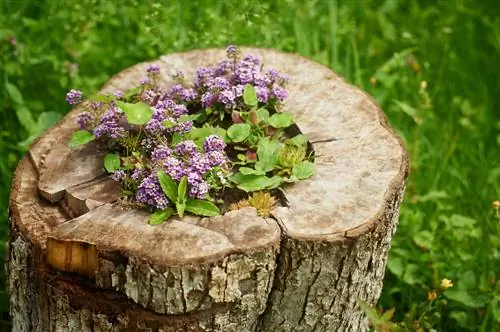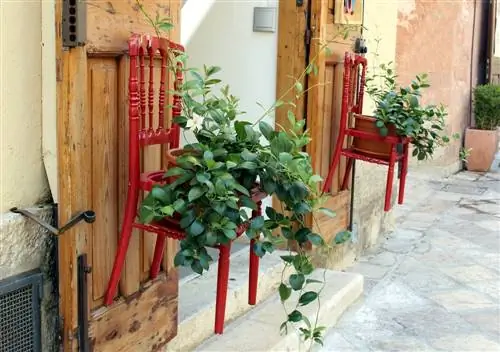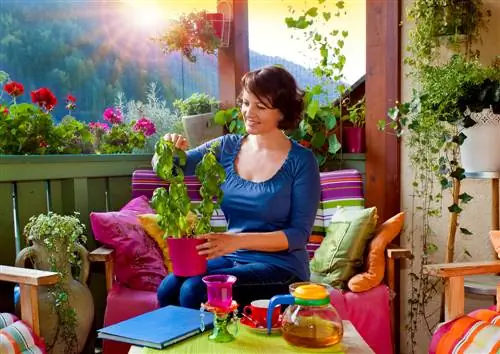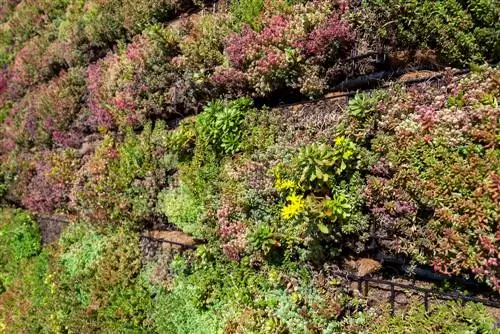- Author admin [email protected].
- Public 2023-12-16 16:46.
- Last modified 2025-01-23 11:22.
The terrace gets a natural atmosphere with ornamental plants. The plants give the outdoor area more color and also make a valuable contribution to nature conservation. The focus is on the vertical alignment.
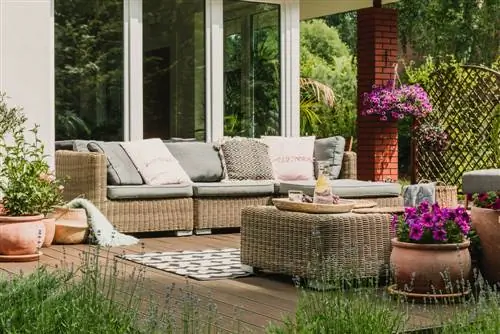
How can I green my terrace?
To add greenery to a patio, you can use modular systems with vertically stacked flower boxes or climbing plants. For modular systems, light substrates such as coconut fibers are suitable; for climbing plants, choose suitable trellises and pots with drainage.
Modular Garden
Modular systems offer space-saving options for small balconies and terraces. They take advantage of the vertical area and consist of flower boxes that are stacked on top of each other and are open to the front. Hanging gardens can be designed in which nasturtiums, black-eyed Susans or field bindweed provide aesthetic accents. It is important that you plant the boxes with herbaceous species. Woody plants develop too much weight.
Substrate
In order to prevent waterlogging, the individual modules require drainage. Light substrates that have a low weight serve as a planting basis. Coconut fibers (€2.00 at Amazon) are ideal because they have good water storage capacity and ensure optimal ventilation. Conventional garden soil is too heavy for a mini garden or self-built vertical garden and tends to compact.
climbing plants
Climbing plants offer another option for greening facades, trellises or pavilions. Here you can choose between perennial and hardy species such as trumpet flowers, honeysuckle, clematis or climbing roses and hydrangeas. In winter, protection made of fleece or bubble wrap and a Styrofoam pad are sufficient. If the climbing plants prove to be sensitive to cold, position the pot on a rollable saucer.
Planting pots:
- Choose a pot with a height and width of 60 centimeters
- Cover the drain hole with pottery shards
- Fill in gravel for better stability
- fill with nutrient-rich mixture and pot plant soil and sand
Attach trellis
Which climbing frame you use depends on the type of plant you want. Self-climbers such as ivy and wild vine require a rough surface on which their disc-shaped adhesive organs can find support. Climbing roses and the bright yellow winter jasmine are among the spreading vines whose thorns or shoots are supported on crossbars on the facade. Clematis species and grape vines pull themselves up with their climbing shoots and require trellis-shaped trellises, while climbing plants such as honeysuckle and wisteria climb up vertical supports.
Tip
Plants for the garden fence are also suitable for adding greenery to balconies and terraces.


